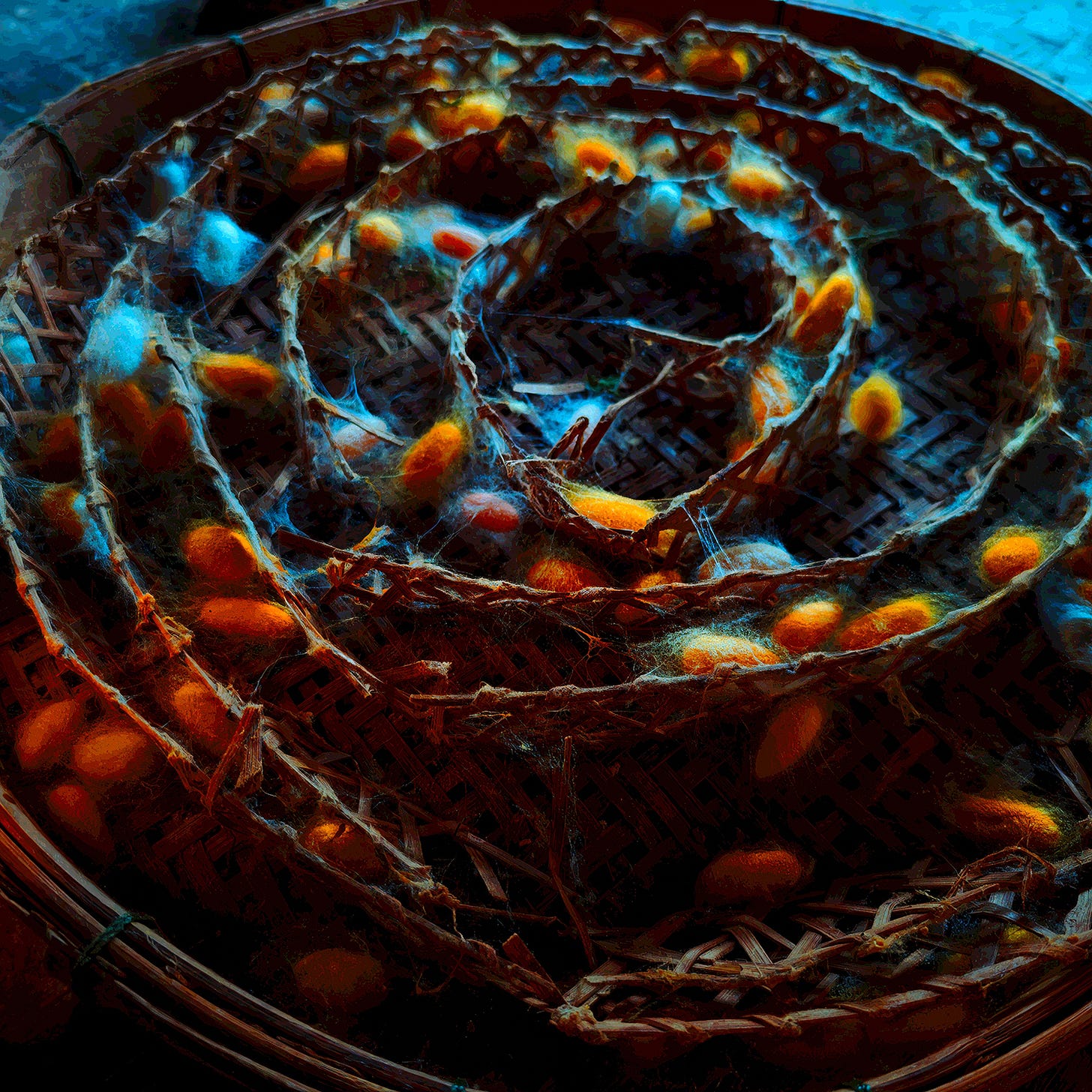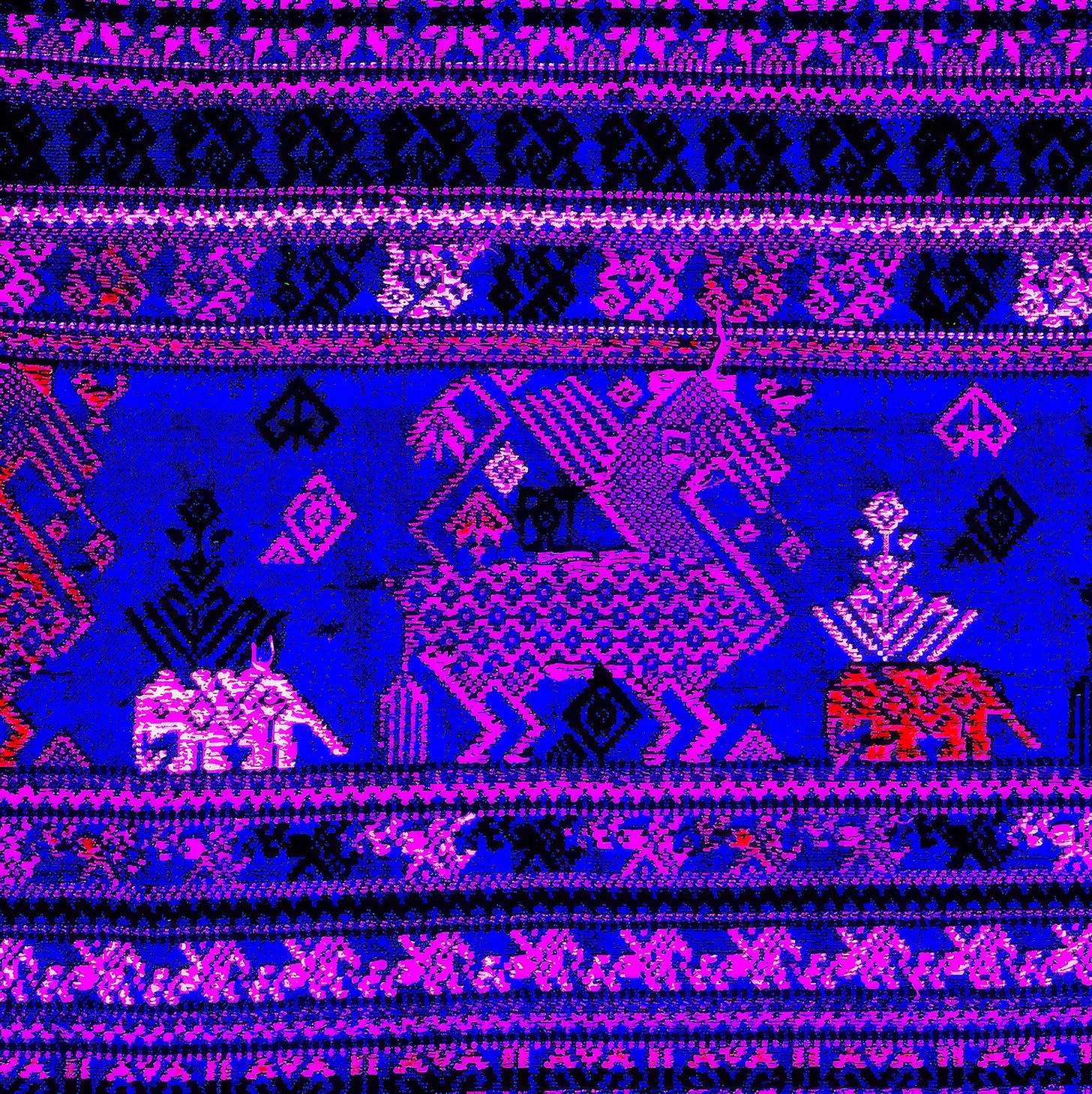XV. Silk route: Lanna’s woven legacy
Part 15 of an international solo on ”Lanna“ by Lim Siang Jin. This online exhibition, comprising 20 parts, is from May 6 to June 5, 2025
FOR CENTURIES, Lanna has been a cradle of silk craftsmanship. Trade routes from China, India, and Southeast Asia carried not just goods but knowledge, blending local traditions with global influences. From around the 15th century, Lanna’s silk industry flourished under royal patronage, with mulberry farms and weaving villages thriving along the Ping River. Silk became more than fabric—it symbolised status, spirituality, and cultural identity, gracing monks and nobility alike. Even as Lanna lost autonomy in the 19th century, rural women preserved its weaving heritage, crafting pha yok (brocade) for sacred ceremonies. Today, Chiang Mai and Lamphun uphold this legacy, where artisans, through cooperatives, safeguard time-honoured techniques—natural dyes, ancestral patterns—against the pull of modernity.
Sojourn: The cocoon’s silent dance
AFTER WEEKS of feeding on mulberry leaves, silkworms, plump and ivory-hued, are gently placed onto bamboo trays. What follows is a quiet spectacle—three to four days of tireless spinning. The worms instinctively weave their cocoons, moving in silent, hypnotic figure-eight patterns. Farmers create a hushed, dim setting, controlling humidity to ensure flawless silk formation. The breathable bamboo trays allow airflow, preventing mould, and preserving the delicate process. This stage is sacred, a meditation on patience and respect for nature’s rhythm. Each cocoon, hardening into a pearl-like shell, holds an unseen transformation. It’s a process that mirrors Lanna’s philosophy—where human hands work in harmony with the silent wisdom of nature.

Enroute: Spinning life into thread
A THAI woman sits cross-legged, her hands moving with effortless skill as she guides a spindle. Nearby, clay pots hold bobbing silk cocoons, their delicate filaments loosened by heat. She carefully hooks a strand, coaxing it into a fine thread. The spindle rotates, spinning the fibres tighter with each measured pull. If too taut, it snaps; too loose, it tangles. Her craft, passed down through generations, is both delicate and strong—just like the silk she weaves. This is Lanna’s legacy: simple tools, skilled hands, and stories spun into silk.
Destination: Woven legends
AS I WALKED around the shop, one piece caught my eye—a striking embroidered textile with Singha lions, elephants, skulls, and what looked like men on horseback. I wasn’t sure at first, but later I learned that these symbols tell a powerful story: The lions and elephants symbolise strength, wisdom, and divine protection; skulls hint at mortality, warrior sacrifice, and the cycle of life; and men on horseback represent bravery, conquest, and historical legacy. Often found in ceremonial textiles, warrior banners, or temple decorations, this embroidery is a testament to the storytelling power of textiles, where every thread carries a piece of cultural wisdom. There are more I cannot decipher. I am looking forward to a journey of discovery.

For more information, click on links: Stephen Menon, O Art Space Gallery, Lim Siang Jin and his art, here and here. For a detailed acknowledgment, click here




